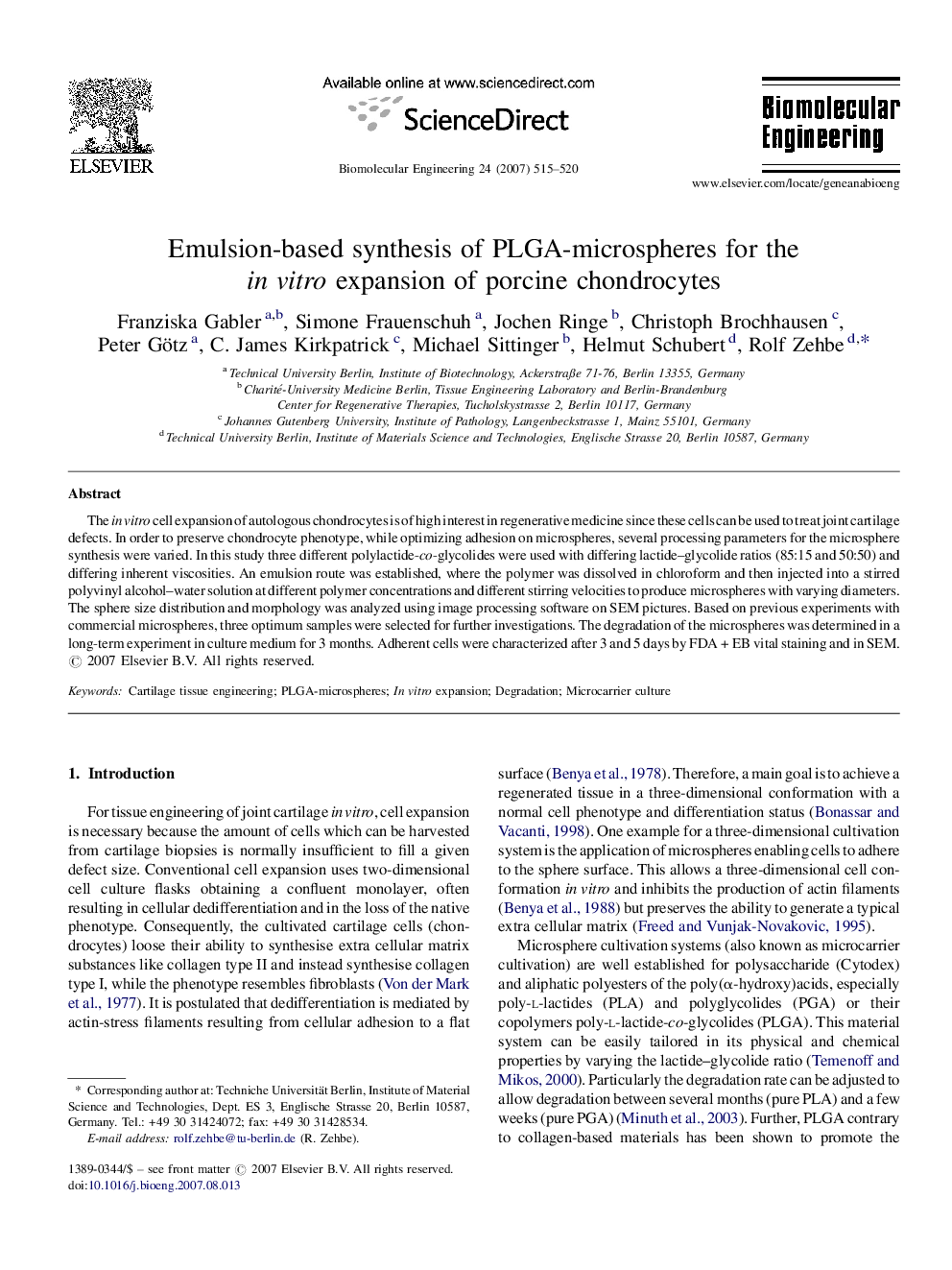| Article ID | Journal | Published Year | Pages | File Type |
|---|---|---|---|---|
| 14135 | Biomolecular Engineering | 2007 | 6 Pages |
The in vitro cell expansion of autologous chondrocytes is of high interest in regenerative medicine since these cells can be used to treat joint cartilage defects. In order to preserve chondrocyte phenotype, while optimizing adhesion on microspheres, several processing parameters for the microsphere synthesis were varied. In this study three different polylactide-co-glycolides were used with differing lactide–glycolide ratios (85:15 and 50:50) and differing inherent viscosities. An emulsion route was established, where the polymer was dissolved in chloroform and then injected into a stirred polyvinyl alcohol–water solution at different polymer concentrations and different stirring velocities to produce microspheres with varying diameters. The sphere size distribution and morphology was analyzed using image processing software on SEM pictures. Based on previous experiments with commercial microspheres, three optimum samples were selected for further investigations. The degradation of the microspheres was determined in a long-term experiment in culture medium for 3 months. Adherent cells were characterized after 3 and 5 days by FDA + EB vital staining and in SEM.
